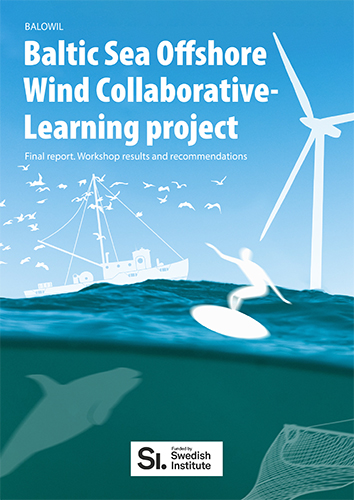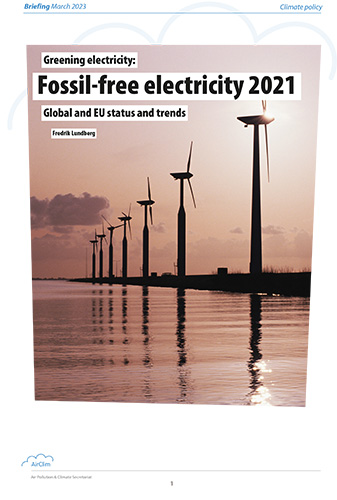
New Gothenburg Protocol soon to be agreed
 Parties at work – all happy to stay at the lowest level. Photo: UGArdener / Creative Commons
Parties at work – all happy to stay at the lowest level. Photo: UGArdener / Creative Commons
Parties to the Convention on Long-range Transboundary Air Pollution will meet in early May to adopt new non-ambitious national emission limits for major air pollutants.
On 30 April to 4 May 2012, the parties to the Convention on Long-range Transboundary Air Pollution (CLRTAP), including the EU’s 27 member states and countries in eastern Europe and North America, will meet in Geneva in order to arrive at a final agreement on amendments to the Gothenburg Protocol on air pollution.
The Gothenburg Protocol covers sulphur dioxide (SO2), nitrogen oxides (NOx), volatile organic compounds (VOCs) and ammonia (NH3). It sets binding national emission ceilings for each of these four pollutants, that were to be met by 2010 and not exceeded thereafter, and it also contains a series of technical annexes setting emission limit values for key sources of these pollutants. It has so far been ratified by 24 European countries, the EU and the United States. (See Box.)
Negotiations for a revised Gothenburg Protocol started in 2007 and have proceeded much slower than anticipated. As late as December 2010 all parties agreed that the revised protocol was to be finalised and adopted before the end of 2011. But now this is expected by May.
It has been particularly difficult to get parties to come forward with specific proposals on their preferred level of ambition, and this was again the case at the last negotiation session in December last year. (For an overview of the ambition levels investigated, see AN 3/11, pp12-14.)
There is however a general agreement to extend the protocol by adding fine particles (PM2.5) to the four pollutants that are currently covered, and that black carbon should also be included in the revision as a component of PM2.5. Since the current protocol has been ratified by only 26 of the convention’s 51 parties, there is also a general aim to get more countries to sign, especially those in Central and East Europe.
Another change is that the new emission ceilings for the target year 2020 will be relative, rather than absolute, i.e. countries will sign up to a specific emission reduction percentage calculated from emission levels in the base year 2005. There are also intentions to allow a three-year averaging of emissions in the target year (i.e. over 2019-21). Moreover, submitted emission data for the base year should be able to be retroactively corrected, taking into account improvements in inventory methodology.
While the choice of ambition level will strongly influence the final outcome regarding the emission reduction commitments, it should be noted that these are complemented by a general requirement to implement best available techniques and apply binding emission limit values (ELVs) for a number of specific emission source categories, including large combustion plants and road vehicles. Therefore the level of ambition of the ELVs, the emission sources covered by these, and the deadlines set for their implementation are also of great importance for the overall outcome.
Technical experts had initially presented three ambition levels for ELVs, of which the stricter Option 1 was said to be “demanding but technically feasible”, which in practice meant it was largely in line with best available techniques. Option 2 was said to “pay greater attention to the costs of measures”, which in practice meant it was largely in line with current EU minimum standards. Option 3 was said to “reflect current practices of a number of parties”, which in effect meant it reflected current emission levels in eastern European countries.
The ELVs currently under consideration in the draft texts are certainly not very ambitious. After the negotiation meeting in September 2012, there were only two ambition levels left – Option 2, which is largely in line with already adopted EU legislation, and Option 3, with even more lenient standards. The latter option will however most probably be removed before the final adoption.
While the national emission reduction commitments are to be achieved by all parties by 2020, eastern European countries, led by Russia and Belarus, have persistently claimed they will need a transition period of 15-20 years to implement the ELVs for existing stationary sources, such as power plants. Rather surprisingly, the request for such a generous transition period seems so far to be acceptable to both the EU and the US.
In the EU, the European Commission and the member states have met several times under the Council’s working party on international environment issues in order to arrive at a coordinated EU position, including the level of ambition when establishing commitments. In this context, the Commission has made tentative proposals for new national emission reduction obligations for 2020.
A group of ten leading environmental organisations in the EU has reacted to the slow pace in negotiations and the apparent lack of ambition to protect human health and the environment by sending a joint letter to the Council and the Commission, urging them to take all necessary steps towards an ambitious agreement.
In doing so, they point to the fact that every year air pollution causes nearly half a million premature deaths in the EU, corresponding to an annual loss of almost 4.5 million years of life. Additional health impacts include increased hospital admissions, extra medication, and millions of lost working days. Air pollution also causes significant damage to ecosystems, agricultural crops, modern materials and our cultural heritage.
Scenario analyses have shown that by aiming for a level of ambition in line with the so-called High* scenario, the implementation of an amended Gothenburg Protocol could by 2020 bring annual health benefits valued at up to €110-290 billion in Europe, of which €50-150 billion in the EU. The economic value of the health benefits has been calculated to be up to 55 times higher than the estimated costs involved.
According to the environmental groups, the negotiations for revising the Gothenburg Protocol have so far been a great disappointment as most EU member states and non-EU countries appear to aim only for a very low level of ambition, with some member states even hesitating to accept emission reduction obligations for 2020 in line with business-as-usual, i.e. based on solely implementing already existing legislation.
They call for the EU to agree to strict emission reduction obligations for the EU member states, thereby also pushing non-EU countries in the same direction, which is of great importance since air pollutant emissions in non-EU countries markedly impact ambient air quality and depositions in many EU member states. Moreover, air pollutants such as NOx and VOCs (which are precursors to ground-level ozone) or black carbon (a component of PM) also contribute to global climate change, and cutting these emissions will therefore benefit both climate and air quality.
In brief, the environmental groups recommend the EU to aim to establish a high level of ambition for national emission reduction obligations for 2020 (i.e. one that is at least in line with the High* scenario), and to adopt ambitious binding emission limit values for specific sources of pollution, preferably at least in line with Option 1.
Overall the EU should ensure the achievement of levels of air quality that do not give rise to significant negative impacts on and risks to human health and the environment, in line with already agreed objectives in the EU’s Sixth Environmental Action Programme.
Last year the European Commissions started a review of its air pollution policy (see AN 2/11, pp. 4-5) that among other things will result in a revised National Emission Ceilings (NEC) directive setting stricter emission limits for 2025 or 2030. Legislative proposals are expected to be presented in 2013, which according to the EU’s Environment Commissioner, Janez Potocnik, has been announced as the “Year of Air”.
Christer Ågren
More information on the Gothenburg Protocol and meeting documents are available at the LRTAP Convention’s website: http://www.unece.org/index.php?id=28153
Letter from environmental organisations.
The Gothenburg Protocol
The Convention on Long-Range Transboundary Air Pollution (CLRTAP) dates back to 1979 and covers 51 parties in Europe and North America. Cooperation under the convention includes development of policies and strategies to cut emissions of air pollutants through protocols with emission control obligations, exchanges of information, consultation, research and monitoring.
The Gothenburg Protocol to Abate Acidification, Eutrophication and Ground-level Ozone was signed in 1999 and entered into force in 2005. It sets binding national emission ceilings for 2010 for four pollutants (SO2, NOx, VOCs and NH3), contains emission limit values for a number of specific emission source categories such as large combustion plants, industry and road vehicles, and requires the use of best available techniques.
For more information, see: http://www.unece.org/env/lrtap/

 Download this issue
Download this issue




















